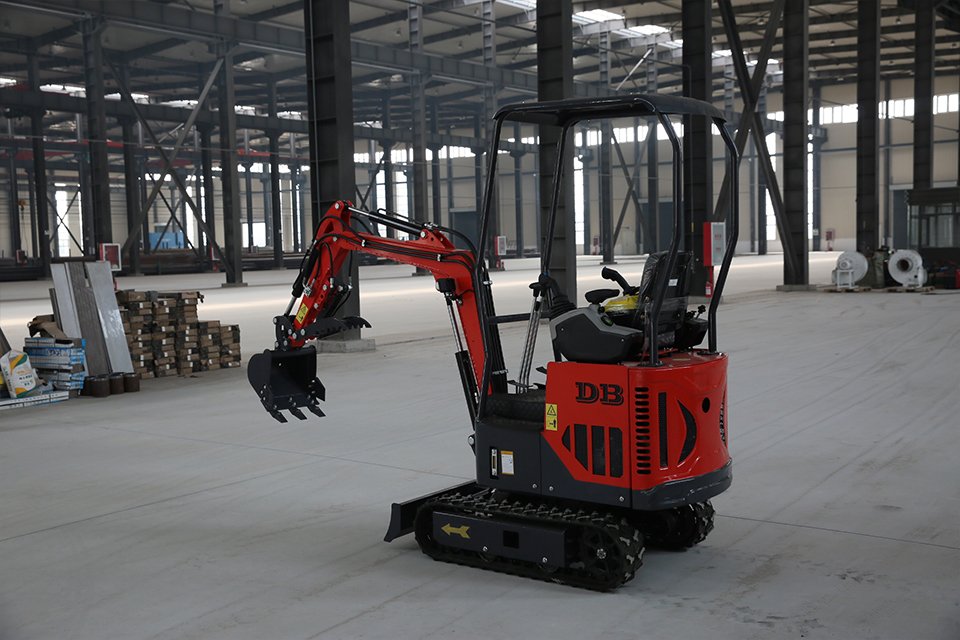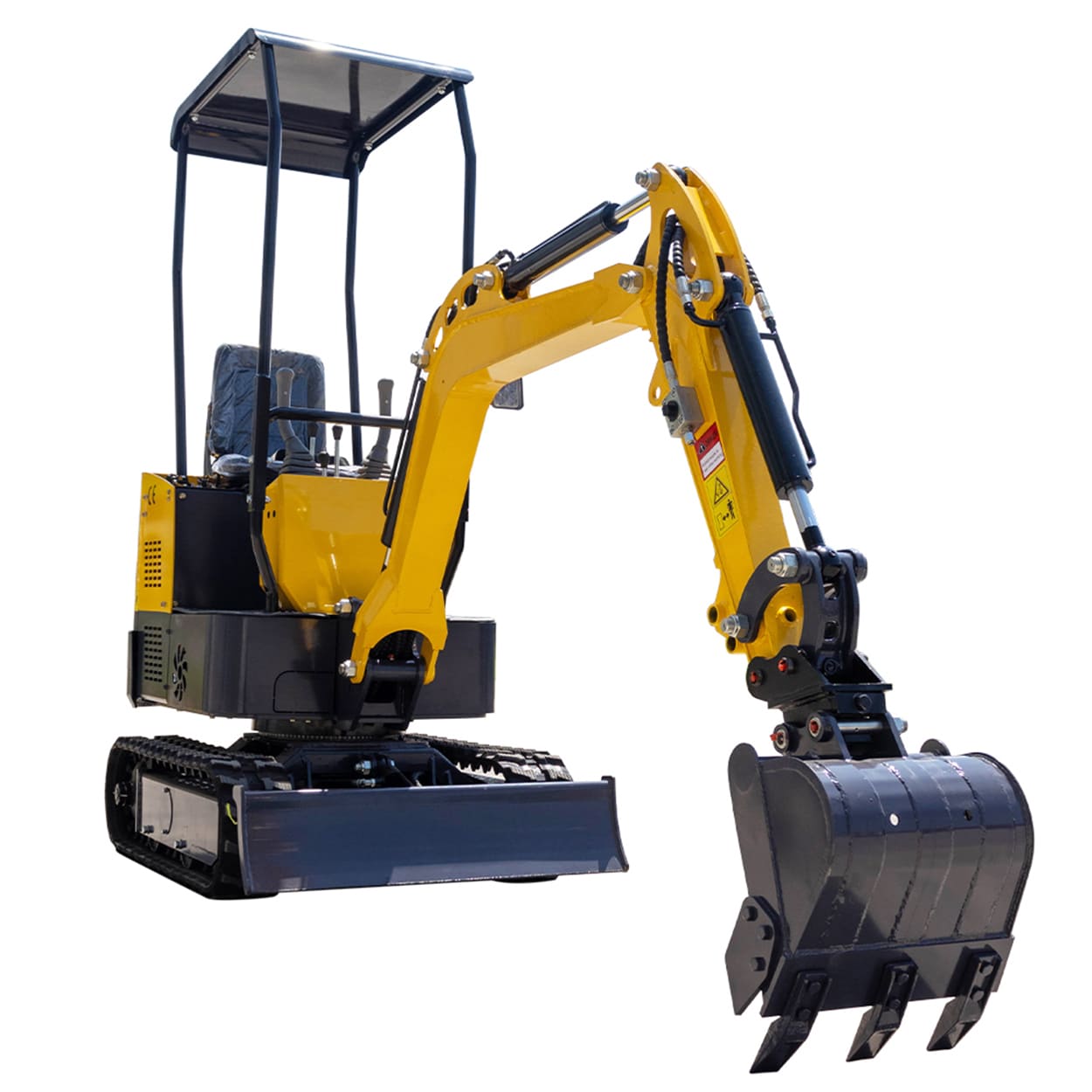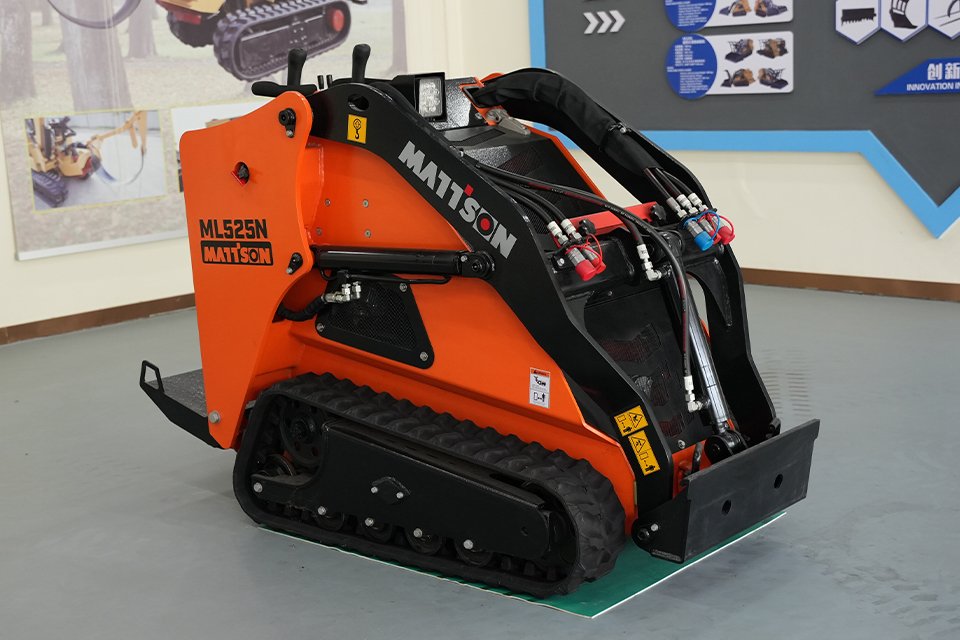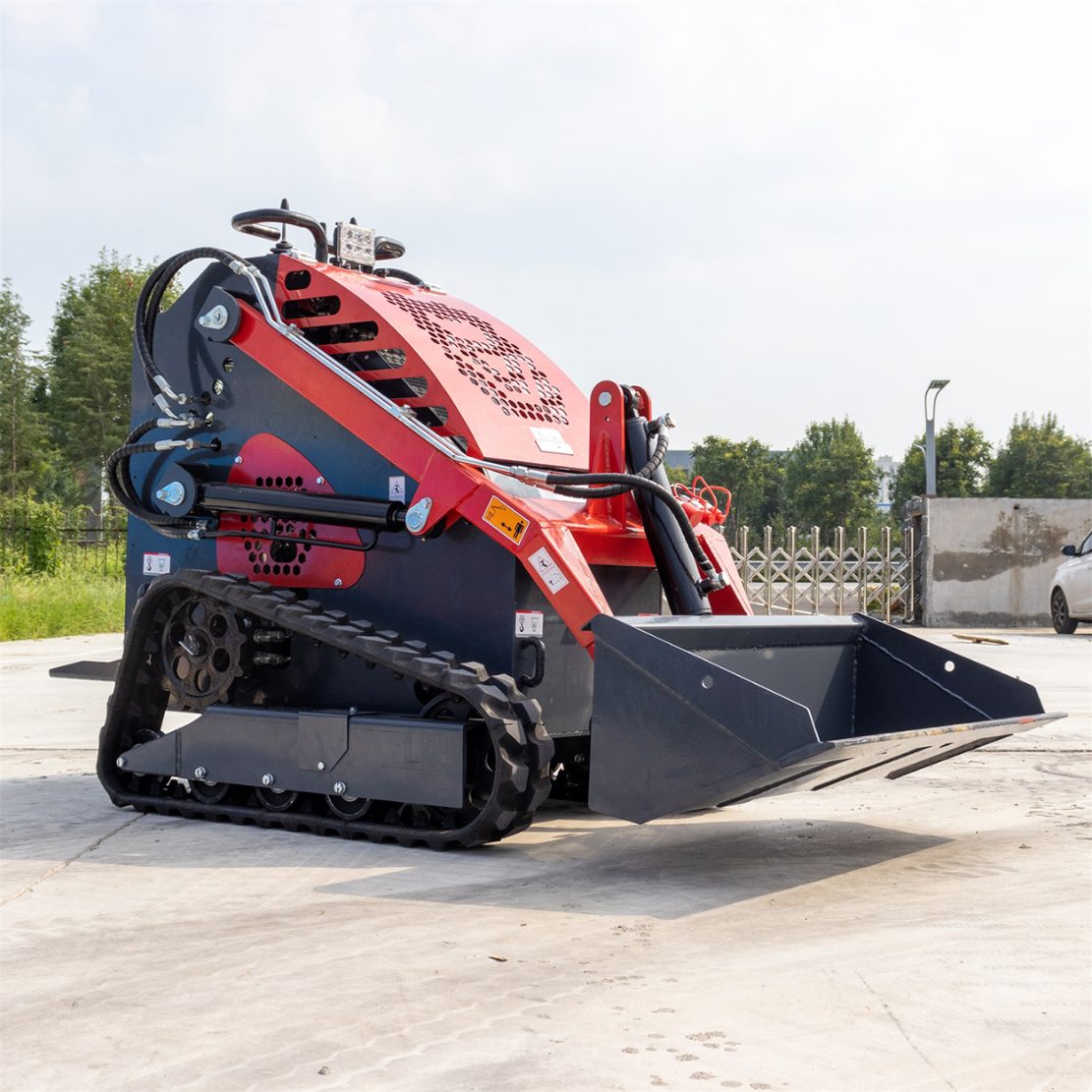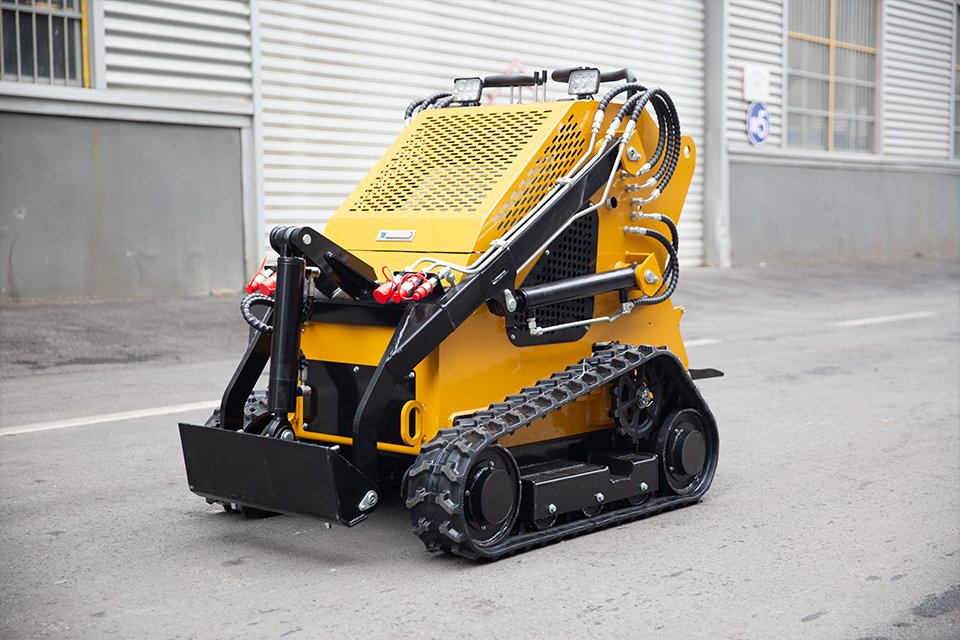Ever wondered how much material your skid steer loader bucket can hold? Knowing the capacity of your bucket is crucial for planning construction, landscaping, or farming projects. In this article, we’ll explore how to measure bucket capacity, understand how many yards it can hold, and why it matters for your equipment’s efficiency.

Experience the power of compact equipment with our Chinese 1 Ton Mini Excavator.
Understanding Bucket Capacity
What Is a Skid Steer Loader Bucket?
A skid steer loader bucket is an attachment fitted to a skid steer—a versatile piece of equipment used in various industries. The bucket allows the machine to load, transport, and unload different materials like rock, mulch, snow, and dirt. The size and design of the bucket determine how much it can hold.
How Do You Measure Bucket Capacity?
Measuring the capacity of a bucket involves calculating its volume. Here’s how:
- Measure the Dimensions: Use a tape measure to find the width, height, and depth of the bucket in feet.
- Calculate Cubic Feet: Multiply the width by the height and depth to get the cubic feet.
- Convert to Cubic Yards: Divide the result by 27 (since there are 27 cubic feet in a cubic yard).
For example, a bucket measuring 3 ft wide, 2 ft deep, and 2 ft high has a volume of 12 cubic feet, which is approximately 0.44 cubic yards.
How Many Yards Does a Skid Steer Bucket Hold?
Standard Bucket Capacities
Most standard skid steer buckets have capacities ranging from 0.4 to 1 cubic yard. The exact yard capacity depends on the bucket’s size and whether it’s a standard, material, or snow bucket.
- Standard Bucket: ~0.4 to 0.6 cubic yards
- Material Bucket: ~0.6 to 0.8 cubic yards
- Snow Bucket: Up to 1 cubic yard or more
Factors Affecting Capacity
- Heaping vs. Level Load: A heaped bucket carries more than a level one. However, overloading can affect safety.
- Material Density: The type of material (e.g., mulch vs. rock) affects how much the bucket can safely hold due to weight differences.
Calculating Material Weight
Why Weight Matters
Understanding the weight of the material is essential to avoid overloading your equipment. Each skid steer has a rated operating capacity (ROC), which is the maximum weight it can safely handle.

Common Material Weights
- Mulch: ~500 pounds per cubic yard
- Topsoil: ~2,000 pounds per cubic yard
- Sand: ~2,700 pounds per cubic yard
- Rock: ~3,000 pounds per cubic yard
Always check the weight of the material and ensure it doesn’t exceed your machine’s ROC.
Can a Skid Steer Bucket Hold a Ton?
A ton is equivalent to 2,000 pounds. Whether your bucket can hold a ton depends on:
- Bucket Capacity: A larger bucket may have the volume but not the structural capacity.
- Material Weight: Dense materials like rock can quickly reach a ton even in small volumes.
- Equipment Limitations: The skid steer loader’s ROC must accommodate the load.
Example: If your bucket holds 0.5 cubic yards of rock (~1,500 pounds), you’re approaching the machine’s limits.
How Mulch Affects Bucket Capacity
Mulch is lighter than other materials, so your bucket can hold more cubic yards without exceeding the weight limit. This makes it ideal for landscaping tasks where larger volumes are necessary.
Delivering and Loading Materials
Using Trucks for Large Loads
For projects requiring large quantities, using a truck for delivery is efficient. A standard pickup truck can carry about 1 yard of material, but professional dump trucks can handle much more.
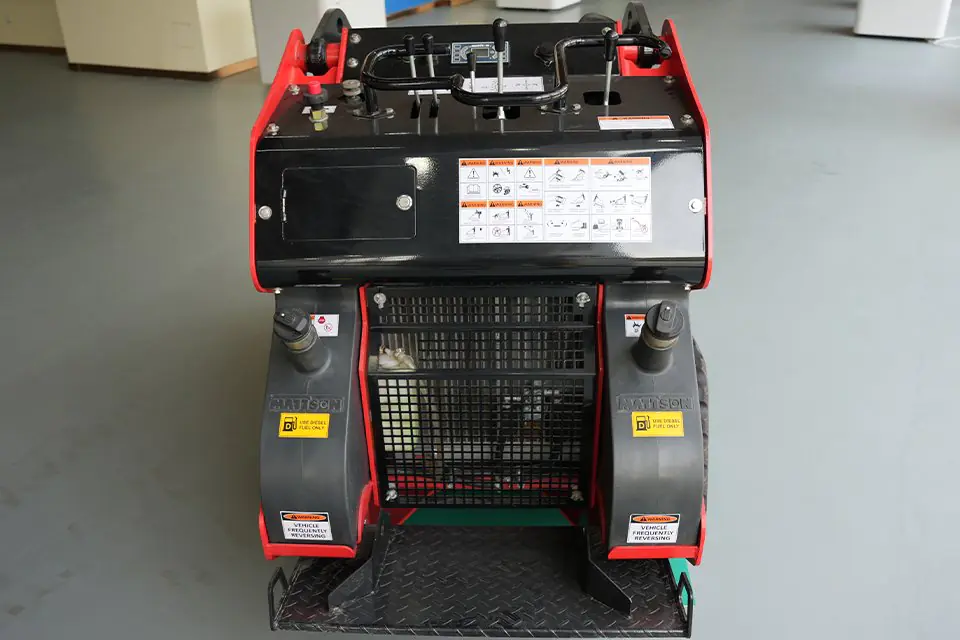
Loading Efficiency
- Heap the Bucket: Carefully heap the material in the bucket to maximize each load.
- Leveling: For safety, ensure the load is balanced and doesn’t obstruct the operator’s view.
Measuring Material for Your Project
Calculating Total Material Needed
- Square Footage: Determine the area in square feet.
- Depth: Decide how deep you need the material (in feet).
- Total Volume: Multiply to get cubic feet, then divide by 27 to get cubic yards.
Example: A 100 sq ft area needing 0.5 ft of mulch:
100 sq ft * 0.5 ft = 50 cubic feet
50 / 27 ≈ 1.85 cubic yards
Forum Insights: Real-World Experiences
Reading experiences from professionals on platforms like TractorByNet Forums can provide valuable insights. Many operators share tips on maximizing bucket usage, handling different materials, and maintaining equipment.
Equipment Upgrades: When to Consider a Bigger Bucket
If you frequently need to move more material, consider upgrading to a larger bucket or even a more powerful machine like our 1.8 Ton Mini Excavator.
Upgrade your operations with the 1.8 Ton Mini Excavator.

Safety Tips for Handling Heavy Loads
- Know Your Limits: Always be aware of your machine’s ROC.
- Avoid Overloading: Exceeding weight limits can cause tipping.
- Regular Maintenance: Keep your equipment in top shape to handle heavy loads.
- Train Operators: Ensure anyone using the skid steer loader is properly trained.
Conclusion
Understanding how many yards your skid steer loader bucket can hold is essential for planning and efficiency. By accurately measuring your bucket’s capacity and considering the weight of your materials, you can optimize your operations, save time, and enhance safety.
Key Takeaways
- Bucket Capacity: Most skid steer buckets hold between 0.4 to 1 cubic yard.
- Material Weight: Heavier materials reduce how much you can safely load.
- Measurement: Calculate capacity by converting cubic feet to cubic yards (divide by 27).
- Efficiency: Use the right bucket for the job and heap carefully.
- Safety: Never exceed your machine’s rated operating capacity.
For more information on skid steers and excavators, visit our Mini Excavator page.

